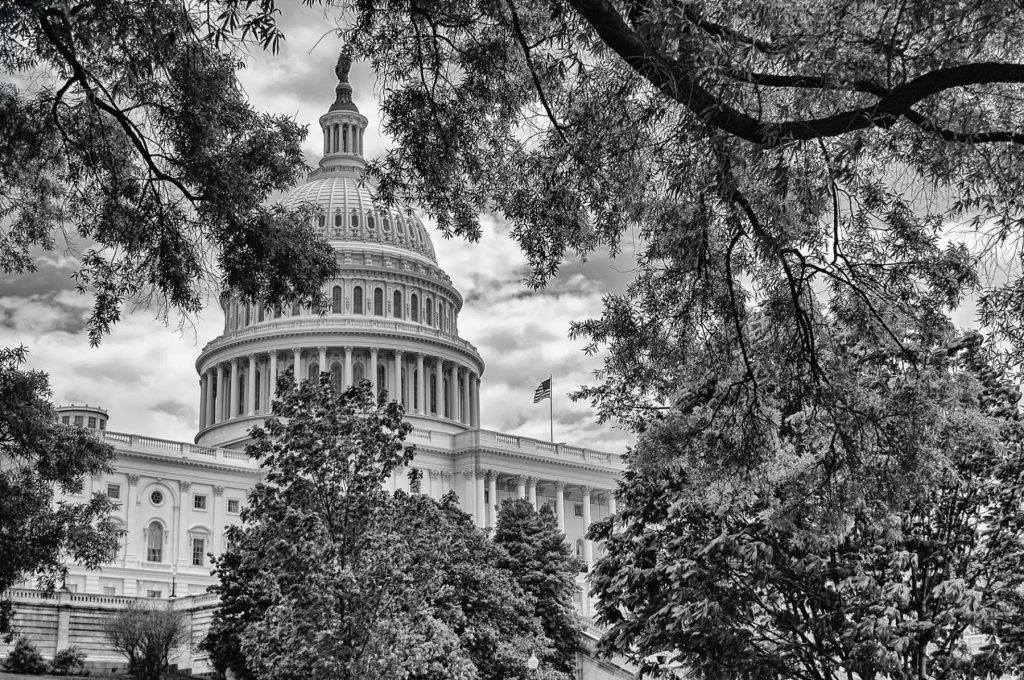The United States has a law banning female genital cutting. What now?

By Hunter Kessous On January 5th, the H.R. 6100-STOP FGM Act was signed into law, upon being passed through the House of Representatives and the Senate unanimously. The federal law criminalizes female genital cutting (FGC), a form of gender-based violence against young girls, which involves medically unnecessary partial or total removal of the external genitalia. According to the Centers for Disease Control, over 500,000 girls and women have undergone or are at risk of undergoing FGC in the United States alone. Globally, that number rises up to 3 million girls at risk per year, with a total of over 200 million girls and women having been cut. The STOP FGM Act strengthens the opposition to FGC by stating that religious or cultural beliefs may not be used in defense of the practice. Additionally, government agencies, such as the Departments of Education and Justice, will be required to report to Congress on the estimated number of women and girls who have undergone or are at risk of FGC in the U.S., and on efforts to prevent the practice. They will also give a report on the actions they take toward educating the community and preventing FGC from continuing. Advocates and policymakers have been working toward this goal for so long that it was concerning when the new law didn’t garner a lot of media attention. This could be because the U.S. has technically had a law against FGC since 1996—emphasis on technically, because for the past two years, the Department of Justice has refused to enforce the law. The only intact portion of the law has been a ban on taking a minor out of the U.S. to be cut, a practice known as vacation cutting. In 2018, a Michigan doctor was taken to court for the mutilation of over 100 girls. The judge dismissed the charges and ruled that Congress did not have the authority to pass the FGC law by associating it with the Commerce Clause, claiming that there is nothing “commercial or economic” about FGC. The STOP FGM law clarifies that FGC is, in fact, linked to inter-state or foreign commerce, thereby confirming Congress’ power to make FGC illegal. Since that pivotal case over two years ago, young girls are now protected against FGC under federal law. Although there is reason to celebrate, activists aren’t putting their feet up anytime soon. As far as policy goes, there is still more work to do. Despite the federal law, state laws against FGC are a necessary tool. Federal and state laws each protect girls in different ways. The federal law against FGC will be put to use if the crime involves interstate activity, such as transporting a girl to another state to be cut. We need state laws against FGC to protect girls in cases of local criminal activity, as was recommended by the judge in the aforementioned Michigan court case. To date, there are still 11 states which do not have any laws against FGC. In the states that do have anti-FGC policies, action must be taken to make these laws more comprehensive. Several states do not clarify that cultural/ritual reasons and alleged consent may not be used as a defense for performing FGC on a minor. Few states have legislation which includes a provision for community education and outreach, which is a key component of prevention. In addition to improving state laws, even more can be done at the federal level. Policy from the Department of Education and Health and Human Services requiring FGC education in schools can go a long way toward prevention. “While we celebrate the signing of H.R. 6100 and the recent Massachusetts law, we must continue to advocate for not only the criminalization of FGM/C, but a Federal Education Law,” said Angela Peabody, founder of the Global Woman P.E.A.C.E Foundation and political lobbyist. “It is imperative for every child in the United States to be knowledgeable about the practice of FGM/C. Even though several states have included an education clause in their laws, a federal law would cover all states. The schools already teach Family Life Education; therefore including the study of FGM/C in the FLE curriculum is not a difficult task. Virginia is already in the process of doing that.” Virginia has incorporated education about FGC into their school curriculum for middle and high schoolers in which they learn “the dangers of FGC, the criminal penalties, and the rights of the victim.” Education such as this serves to increase awareness, put an end to the thinking that FGC is not an American issue, and give a voice to the next generation of activists. The current law criminalizes FGC, and calls on several government agencies to enact programs that will protect girls and create public awareness. The law left the guidelines for these agencies vague, which leaves room for experts and advocates to guide these departments. There are many ways, for example, that policy can support girls and women living in the U.S. who have already undergone FGC, or those who will be cut in spite of the new law. Survivors face a range of physical and psychological complications. These include, but are not limited to, infection, fistulas, birth complication, sexual dysfunction, and post-traumatic stress disorder. Policy could go a long way to alleviate these burdens. For example, survivors of domestic violence are permitted to enroll in an ACA healthcare plan at any point during the year, rather than just during the open enrollment window. A policy such as this being applied to FGC survivors and their dependents would be a great step toward increasing access to healthcare. Yet, many of the less expensive healthcare plans do not provide counseling services, and this may not be apparent until after the plan has been purchased. Therefore, another area where legislation could protect FGC survivors is by creating federally funded programs to provide needed health care services, which may be lacking from their current healthcare plan, at subsidized rates or at no cost. There was
Dear Maasi: Where do I begin with psychotherapy after undergoing khatna?

Dear Maasi is a column about everything you wanted to know about sex and relationships but were afraid to ask! It’s a partnership between Sahiyo and WeSpeakOut, and is for all of us who have questions about khatna (female genital mutilation/cutting or FGM/C) and how it impacts our bodies, minds, sexualities and relationships. We welcome you to submit your anonymous questions. Dear Maasi, In an October 22nd webinar about sex and mental health after khatna, you talked about different kinds of psychotherapy that are helpful for survivors. I think I might want to see a psychotherapist to talk about khatna (FGC), but I don’t know where to start. —Anonymous Dear Anonymous, There are many paths to healing, and psychotherapy is one of them. I’m a big believer in its efficacy, and not just because I am a psychotherapist—I found psychotherapy very helpful in working through my own khatna-related emotional and sexual trauma. None of my psychotherapists had heard about khatna, or had been trained in counseling survivors of female genital mutilation/cutting (FGM/C) before working with me. Only two had a basic knowledge of FGM/C from their own reading, and this was about Types III or IV. I expected that; it’s only since 2015 that there’s been any widely held public discourse around khatna. While more therapists are getting better trained, it’s fairly rare to find an experienced FGM/C trauma therapist. Therefore, it was up to me to take some initiative in my own therapeutic journey. Here are some tips: Seek out a psychotherapist who has at least five years of experience working with survivors of sexual trauma. Of these, look for someone who has training in a model or approach that goes beyond standard “talk therapy,” which tends to focus on cognitive understandings. Because trauma gets housed in the body, it’s important to directly address the unconscious and the body. A few examples of approaches that can be helpful to trauma survivors are (but not limited to): Internal Family Systems, Somatic Experiencing, Mindfulness, and EMDR. Interview a few therapists. (Most will offer a free half-hour consultation for this purpose). Besides asking about their knowledge, experience and approaches, tune into your gut regarding “match” or how connected you feel with the person. Your relationship with a psychotherapist is an important part of the process. Gather information about khatna for context around the practice. Send some links so the therapist can do their own reading and learning. It’s good for them to process the information and their own reactions before working with you so that you can feel free to open up. Here’s a piece I wrote to share with people: Seven Things Not to Ask a Khatna Survivor. Here are two deeper dive khatna resources: Understanding Female Genital Cutting in the Dawoodi Bohra Community The Clitoral Hood A Contested Site Khafd or Female Genital Mutilation/Cutting (FGM/C) in India Resolving the trauma of khatna can help us live happier, more fulfilling lives. Anonymous, I wish you well in your healing journey! Maasi
Texas woman charged for Female Genital Cutting: Sahiyo press statement

A woman from Houston, Texas (USA) has been charged under federal United States’ law for transporting a minor out of the country for the purpose of Female Genital Mutilation/Cutting (FGM/C). According to the Federal Bureau of Investigation (FBI) which is investigating this case, the 39-year-old woman allegedly transported the child sometime between July 10 to October 14, 2016. This is the first time that the US Department of Justice has indicted anyone under this specific clause of the US anti-FGM/C law, i.e, transporting a minor girl outside of US borders to facilitate the practice of genital cutting. While FGM/C has been illegal in the United States since 1996, this clause was introduced in 2013. The FBI is investigating the case with the support of the Human Rights Violators and War Crimes Center, a government agency that works to identify, locate and prosecute human rights abusers in the US. While further details about this case are awaited, it is important to note that the Houston woman has not been charged under the new federal anti-FGM/C law that was signed by the US President on January 5. Since the alleged crime took place in 2016, she has been charged under section 116(d) of the older federal law against FGM/C. The older federal law has been the subject of controversy since April 2017, when two Michigan doctors and six other members of the Dawoodi Bohra community became the first people to be prosecuted for performing/facilitating FGM/C on at least nine minor girls in the Michigan area. In November 2018, even though a US District Court judge acknowledged that FGM/C was a “despicable” practice, he ruled that the federal law prohibiting it was unconstitutional. This ruling was based on a technicality: the judge stated that FGM/C is considered a “local criminal activity” to be looked into at the state level rather than the federal or national level. The ruling triggered a controversy because it placed girls in the US at the risk of being cut. Only 39 out of 50 US states currently have laws prohibiting FGM/C, allowing room for girls to be transported across state borders to be subjected to the practice. The new “Stop FGM Act of 2020”, signed by the government this month, closes this loophole and allows federal authorities to prosecute people suspected of carrying out FGC anywhere in the country. Sahiyo statement: We at Sahiyo have been advocating for a complete end to the harmful practice of Female Genital Cutting, also known as Khatna or Khafz in the Dawoodi Bohra community, since 2015. FGC is a violation of the rights and bodily integrity of women and girls, and can have long-term physical, psychological and sexual consequences for them. In light of this indictment of the Houston woman, we strongly urge members of all FGC-practicing communities to completely abandon this age-old ritual, not just because it is illegal in the US and several other countries, but because it is harmful, patriarchal, medically unnecessary, and detrimental to the well-being of girls and women. At the same time, we also urge all global media publications to report on this case — and on the subject of FGC — with sensitivity and nuance. We request the media to refrain from vilifying specific communities, or using terms such as “barbaric” or “mutilation” that might trigger a survivor’s trauma. To learn more, check out Sahiyo’s Guide: A Resource Guide To Best Practice For Sensitive and Effective Reporting on FGM/C. For more information, email info@sahiyo.com or to contact Sahiyo U.S., email mariya@sahiyo.com.
